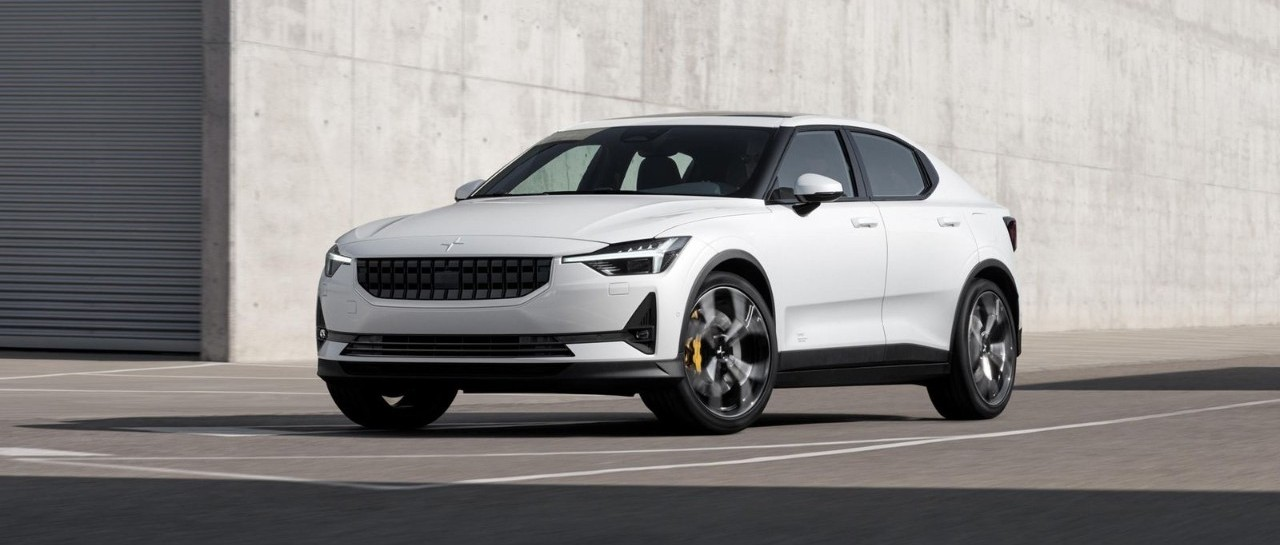On February 27, 2019, Polestar unveiled their first all-electric sedan, the Polestar 2, which was designed to truly compete with Tesla’s Model 3 from the outset.
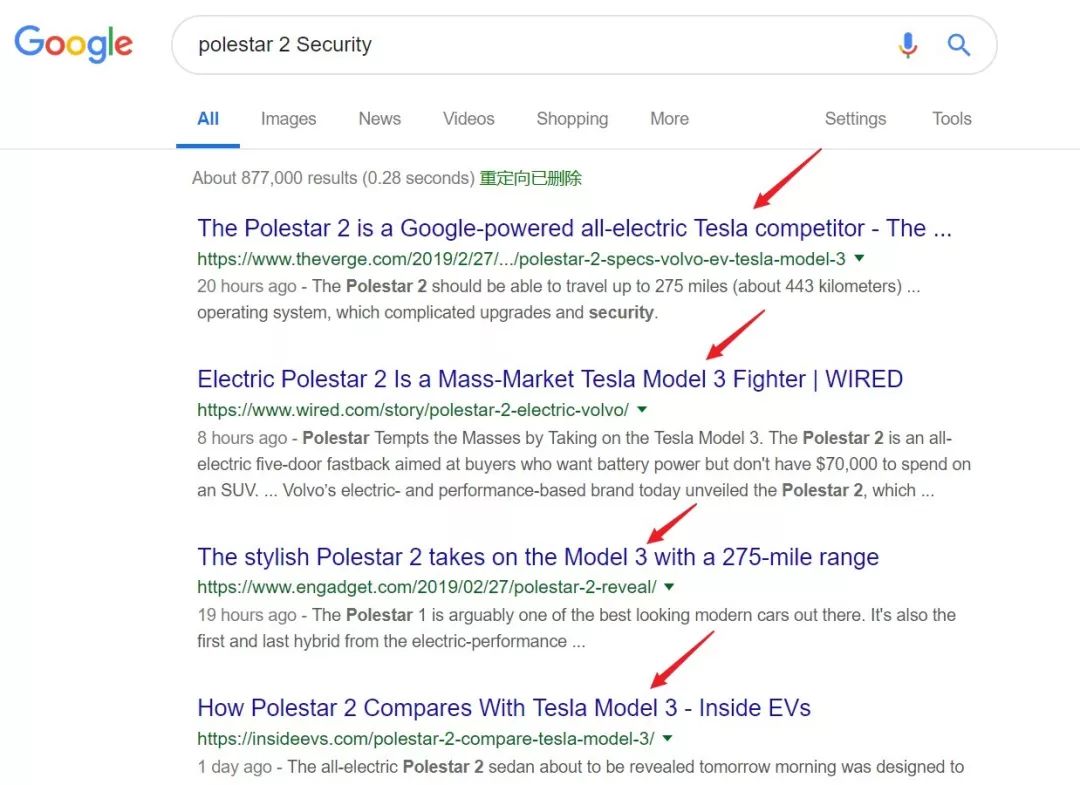
Given this fact, it is inevitable to compare the two cars side by side.
So, how can they be compared? It’s a PK game between the challenger and the defender. Let’s take a look at the game rules set by the Model 3 as the defender. The key to Tesla’s approach to intelligent electric vehicles is to achieve excellence in design, vehicle safety, powertrain, automated driving assistance, and intelligence.
Is the Polestar 2 ready?
Design
The design of the Polestar 1 was highly acclaimed.
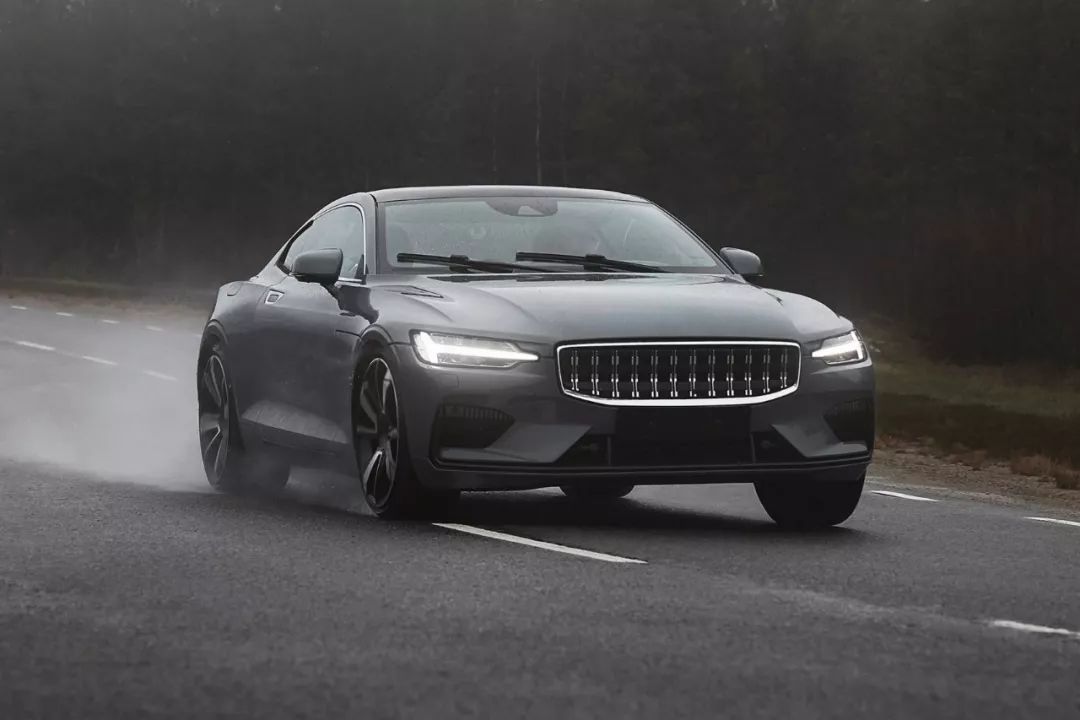
What about the Polestar 2?
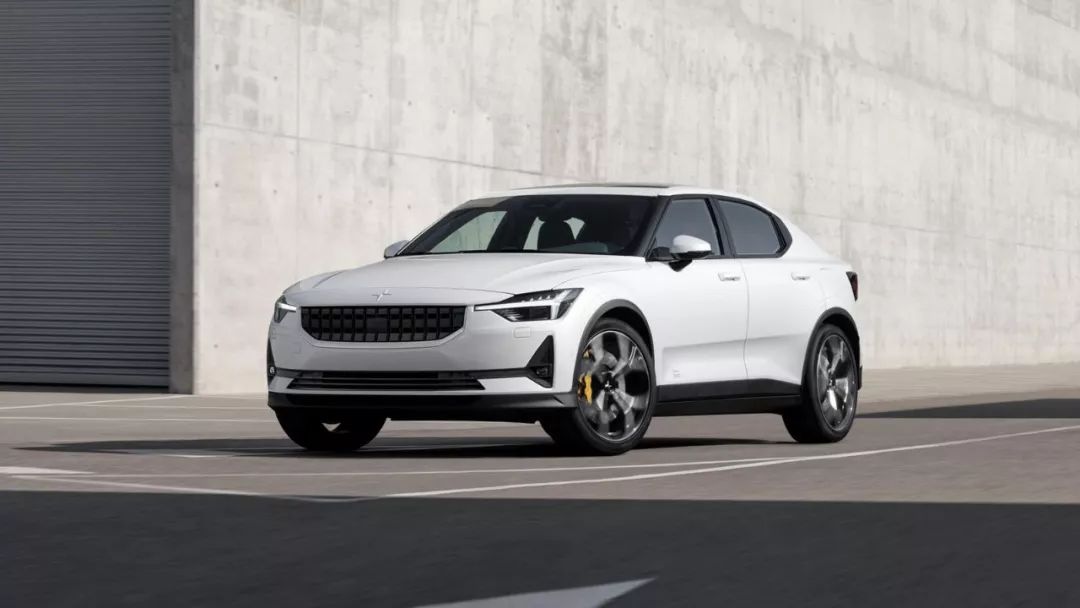
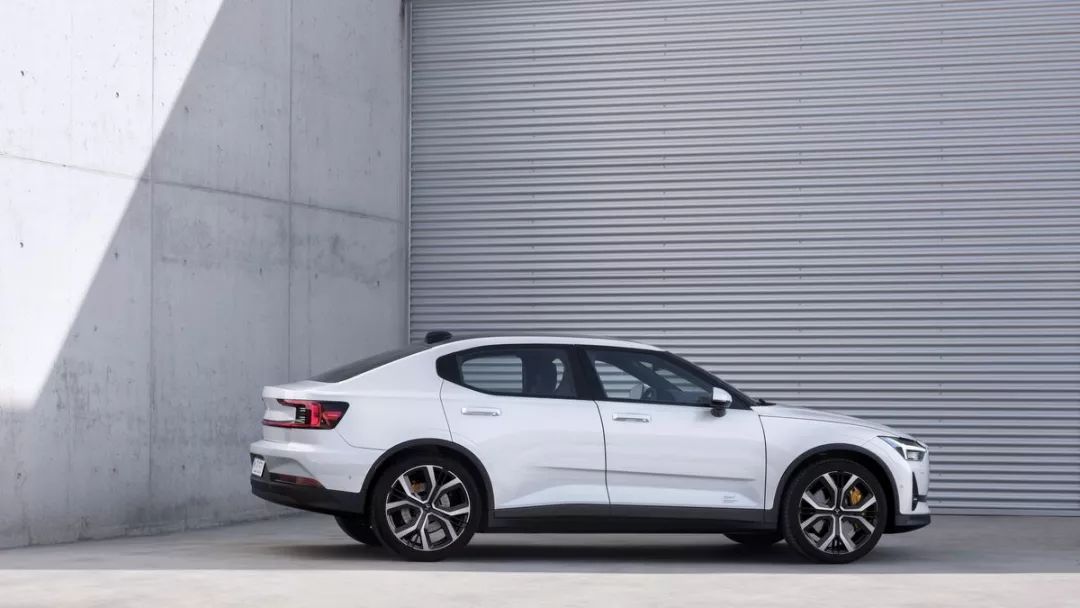
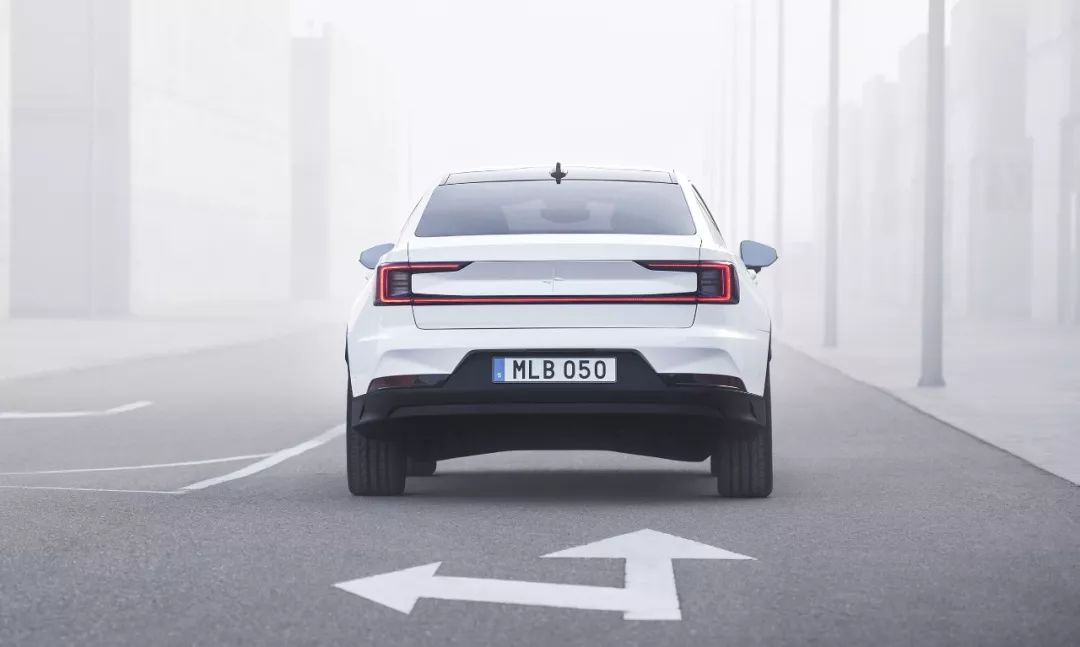
At first glance, there is a sense of familiarity with the Polestar 2, and it is closely related to the CMA architecture, on which the vehicle is based.
On May 18, 2016, Volvo announced the launch of the CMA (Compact Modular Architecture), a luxurious compact vehicle platform architecture jointly developed by Volvo and Geely. At the same time, they demonstrated two concept cars, the 40.1 and 40.2. The 40.1 later became the new Volvo XC40, and the 40.2, with the Volvo logo replaced by Polestar and new wheel hub styling, became the Polestar 2.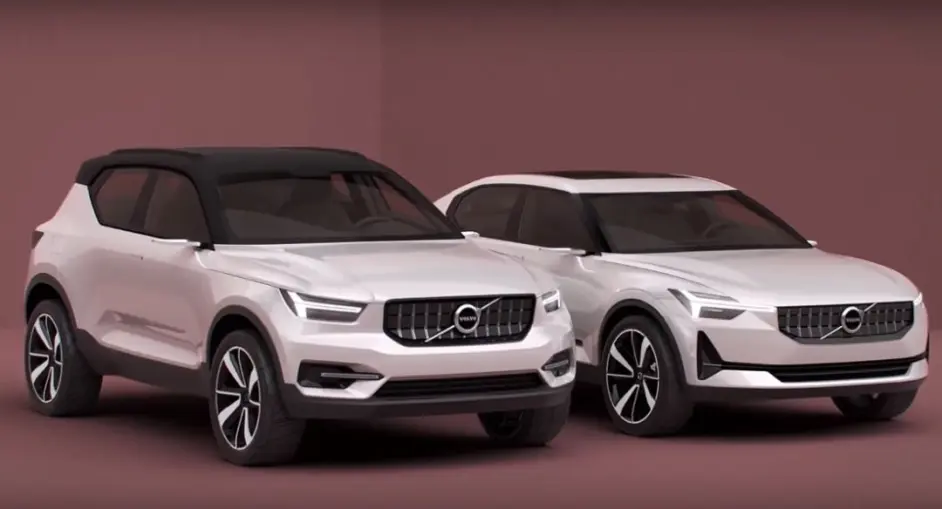
Aesthetics are always subjective. Compared to the 40.2 concept car, Polestar 2 has made some “non-conceptual” designs, such as changing the virtual rearview mirror to a conventional design, and the hidden door handles to a traditional style. The smooth and soft lines replace the muscular lines throughout the car.
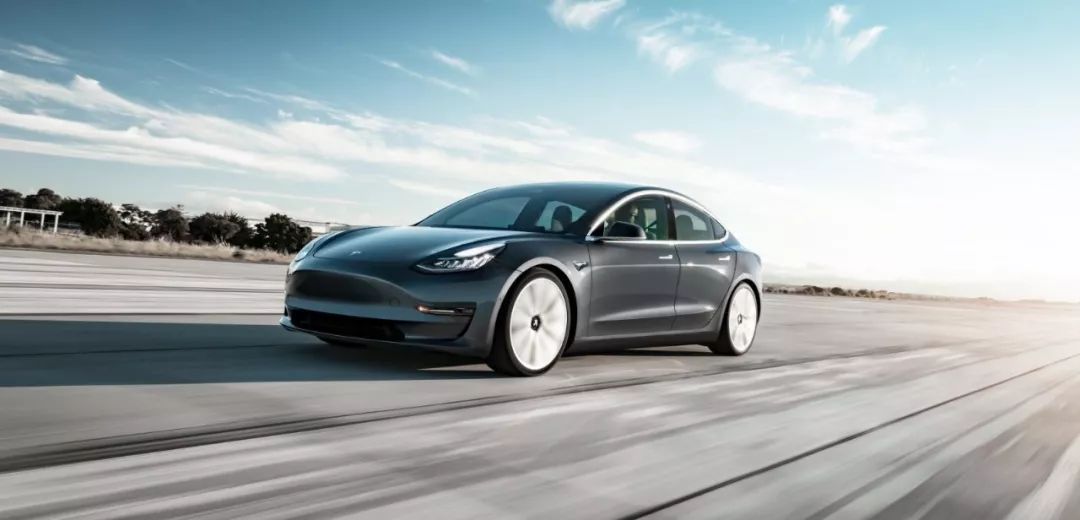
But when compared to the Model 3, you will immediately notice that the Model 3 has fewer lines and is more streamlined. From an engineering perspective, the air resistance and related energy consumption of the Model 3 will have better performance than the Polestar 2. Of course, there are different opinions on styling.
This is the interior of the Polestar 2. If you cover all the logos and guess the brand from the interior design, you will quickly conclude that this is a Volvo model.
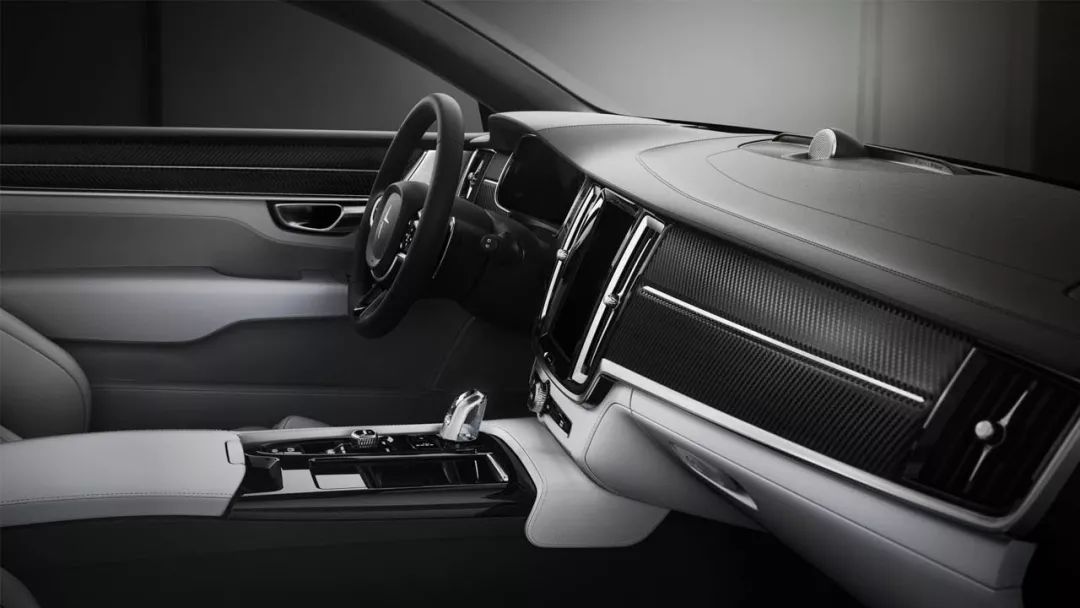
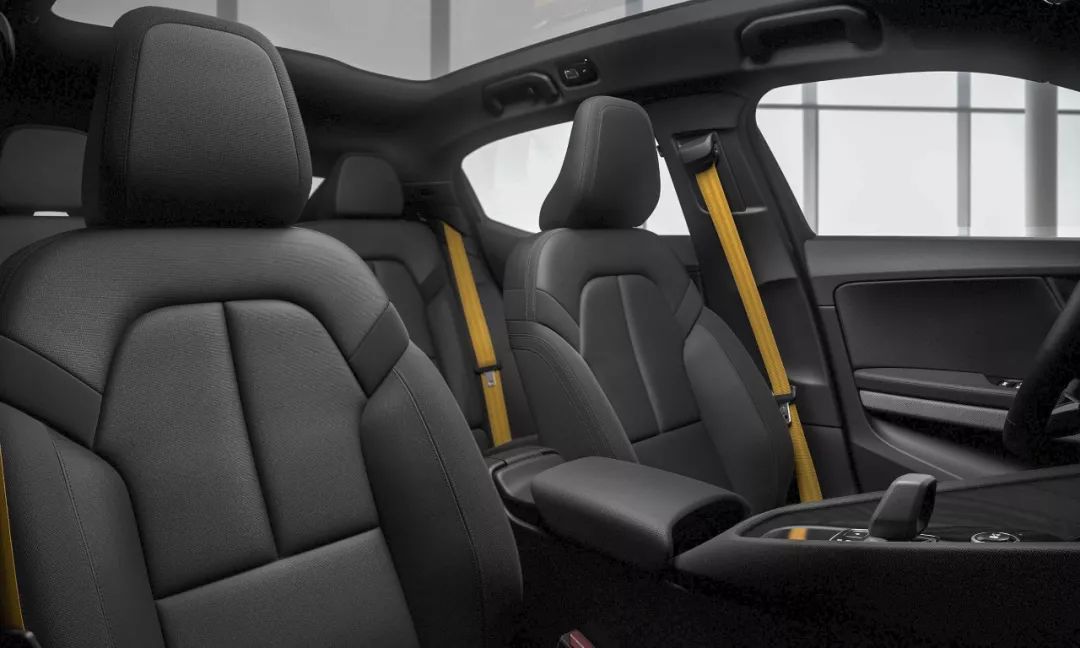
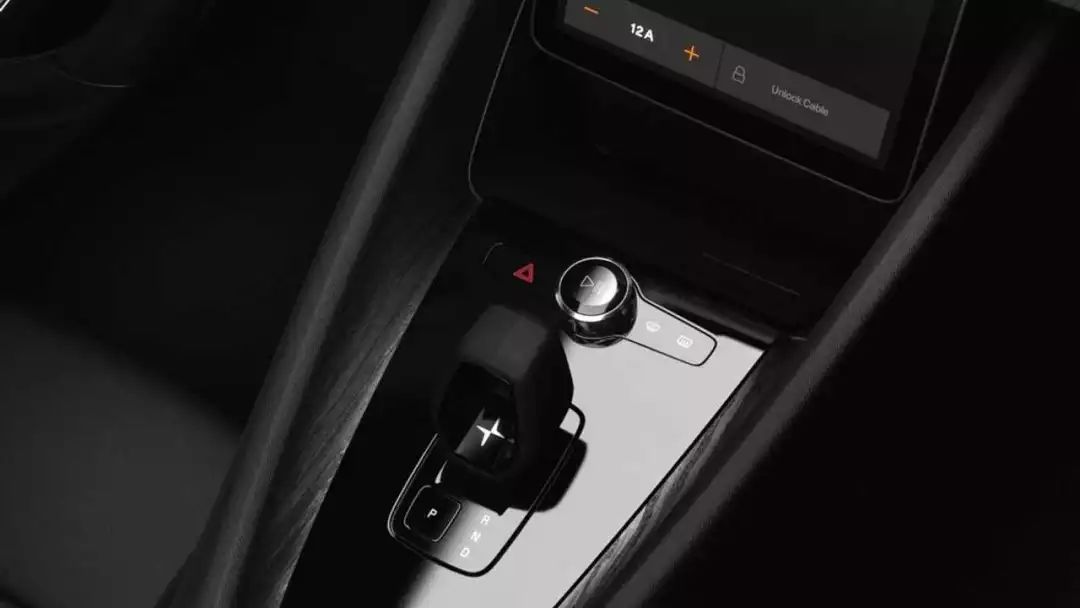
To be frank, although the interior design of the Polestar 2 is not as extreme as the Model 3, I personally appreciate this kind of “cold and technological” feeling.
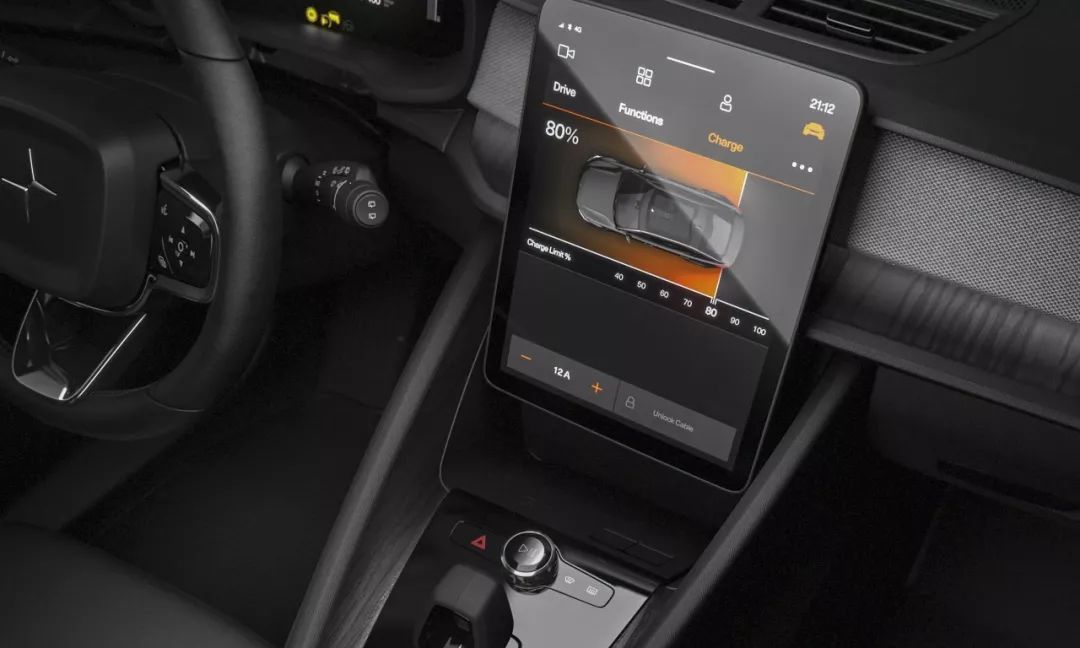
The only downside is the UI color scheme of the center control screen. It lacks a sense of technology and is not very user-friendly for young people. However, if you change to a more delicate UI and more eye-catching colors, will it not match the overall color tone and atmosphere of the interior? Perhaps, this is due to Polestar’s pursuit of a unified visual experience.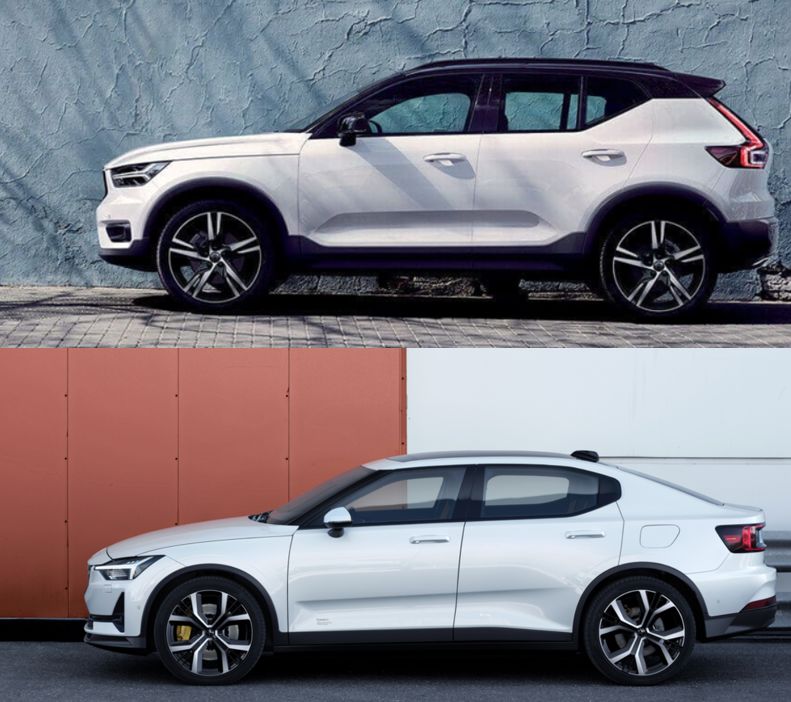
The last thing to say is that if something doesn’t seem quite right with the side view of this car, I think it’s hard to escape the blame of its 4,607 x 1,800 x 1,478 mm size and meager 2,735 mm wheelbase. In an interview in 2018, Thomas said the Polestar 2 is a mid-sized sedan, but now it looks quite challenging.
The Model 3 is smaller than the same-class BBA, and the Polestar 2 is even smaller than the Model 3.
Vehicle Safety
Speaking of vehicle safety, from a public opinion perspective, safety of the Polestar 2 should not be a concern. As mentioned earlier, the car is developed based on the CMA architecture. And in the field of safety, Volvo has always been considered to have an advantage at least at the consumer perception level.
To some extent, Elon Musk seized on consumer confidence in the safety of the vehicles from Volvo by directly comparing the Volvo S60 that earned the IIHS Five-Star Safety Rating with the Model 3 at the Model 3 press conference, and we all saw the results.
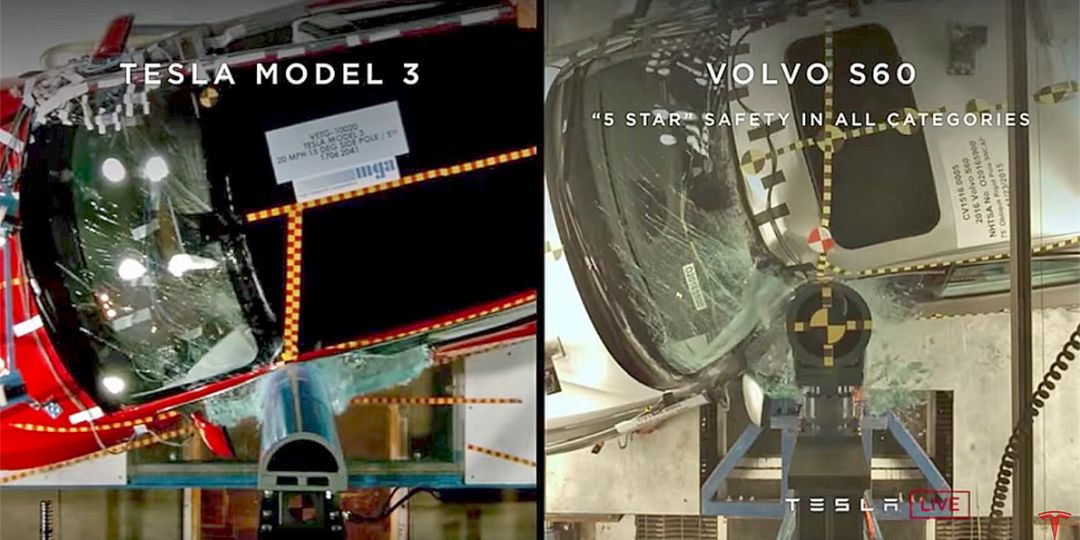
So what level of passive safety has the Model 3 achieved and must drag out this old picture again? It can be said that Tesla is the Volvo of the intelligent electric era in the field of passive safety, with nothing falling short of reaching its level.
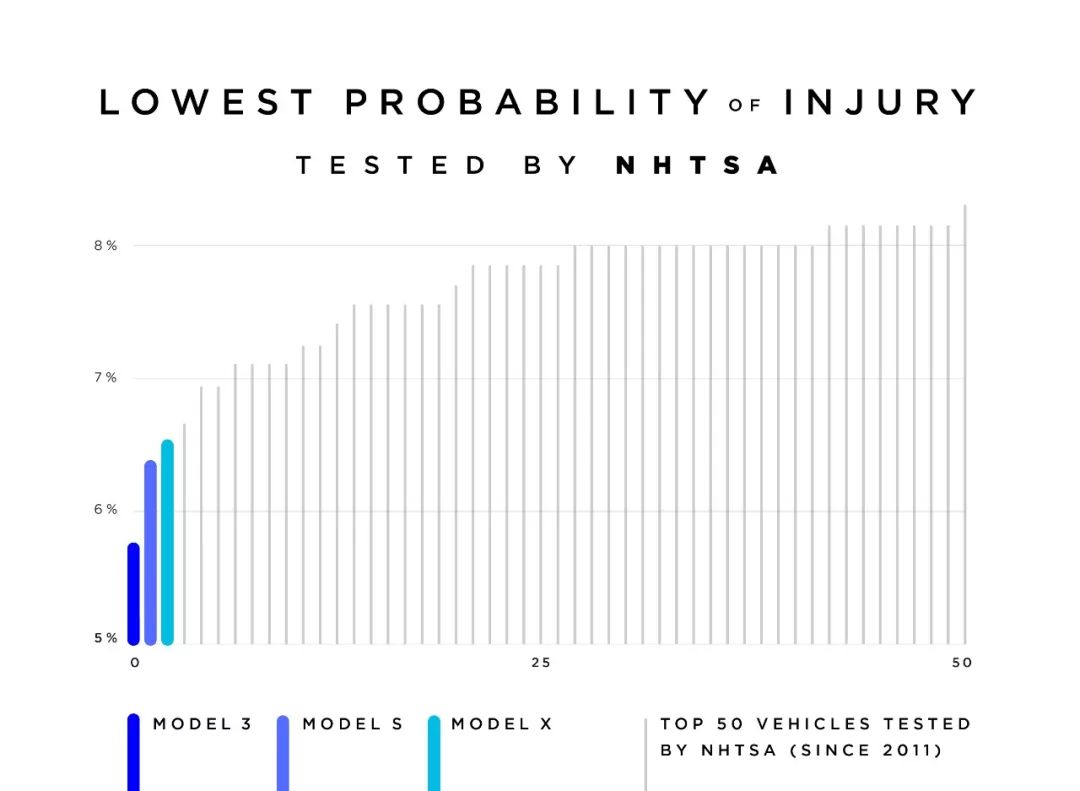
What about the safety level of the Polestar 2? At yesterday’s press conference, Polestar CEO Thomas Ingenlath stated that the Polestar 2 has undergone the SPOC (Volvo’s partial overlap crash test) and performed very well. “The engineering and design of the Polestar 2 are aimed at achieving the highest star rating in future safety assessment tests, and the upcoming tests will prove this.”
In other words, the Five-Star Safety Rating has not yet been achieved, but the safety goal of the Polestar 2 is truly committed to this. Considering the safety heritage from Volvo and the lower engineering difficulty in achieving a Five-Star Safety Rating for pure electric vehicles, Polestar’s safety should be able to pass.Here is the translated text in English Markdown:
It is worth noting that nowadays almost all forward-looking pure electric vehicles will adopt the design of laying the entire battery pack flat on the chassis, which is not surprising from the perspective of engineering design in terms of safety and spatial arrangement. However, this design was named “Multifunctional Power Battery” during the Polestar 2 launch event.
This is because in addition to laying the battery pack flat on the chassis, Polestar also achieved “additional resistance to torsional stiffness for Polestar 2 through the battery’s hard and non-bendable characteristics. At the same time, there is also a significant improvement in the level of NVH (noise, vibration, and harshness), including noise, vibration, and sound vibration roughness, which is 3.7 decibels lower than that of the same level of gasoline-powered cars.
Considering that Tesla Model S has once done reinforcement for the chassis and its NVH level across the entire model was worrying, the functional development that Polestar 2 has done to the battery still holds much curiosity.
Power System
Let’s start with the basic parameter comparison for the power system.
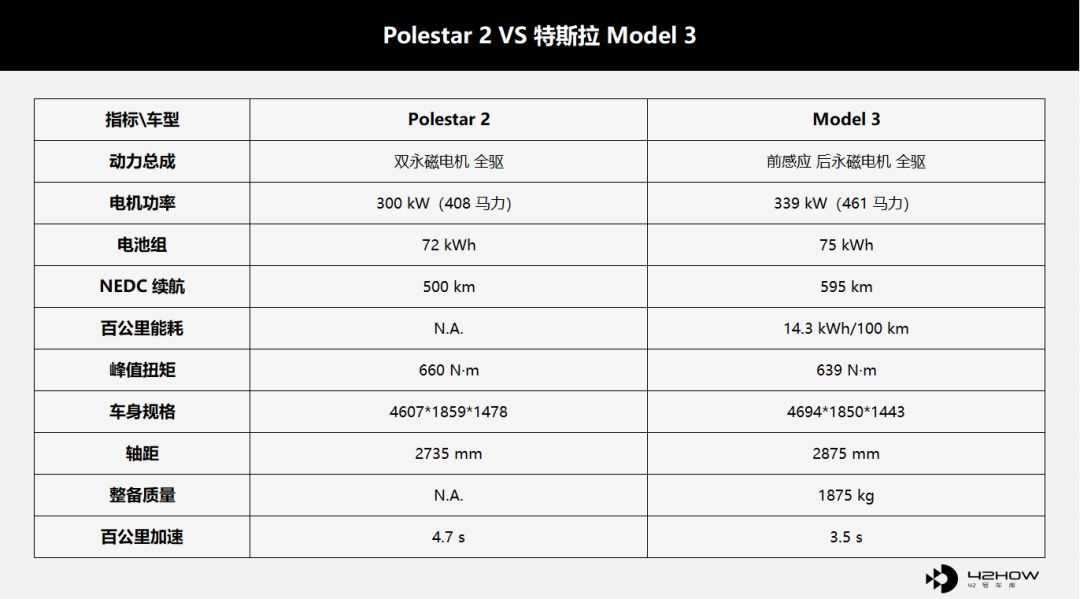
It’s interesting that the European version of Polestar 2’s battery pack has a specification of 78 kWh, while the domestic version’s specification is 72 kWh. Is it fair to Europe? Actually, before that, another car had a problem of inconsistent battery pack specifications at home and abroad: the European version of Jaguar I-PACE’s battery pack has a specification of 90 kWh, while the domestic version is only 81 kWh.
However, this is not the so-called downgraded version, and the truth is that the Chinese Ministry of Industry and Information Technology requires the specification of the battery pack for pure electric vehicles to be reported according to the available capacity. The conventional practice of car companies is to report 95% of the initial capacity, such as NIO ES8’s initial capacity of 70 kWh, which has an available capacity of 67 kWh. Jaguar reports according to 90%, giving an available capacity of only 81 kWh.
Is Polestar 2 for the same reason? The official didn’t give any clear explanation, so let’s wait until it’s released in China to have a deeper understanding.
There is nothing much to say about other parts. As a veteran power in the field of intelligent electric vehicles, Tesla’s victory at this level is not surprising.
Automatic Assistance Driving
This part was originally the highlight. Do you know Mobileye, the leading ADAS giant that shines today, and guess which carmaker was its first partner? It was Volvo.# Why Volvo?
The automatic driving assist system belongs to the active safety system measures which control the vehicle. The higher torsional rigidity and lower center of gravity, which are part of the overall vehicle architecture, are passive safety designs. However, they both serve to improve the overall vehicle safety and reduce accidents at a higher level, which is a tradition with Volvo.
Now, both NIO and Jia are working with Mobileye, but Volvo is a long-time, proven partner of Mobileye. Unfortunately, there were no surprises regarding the automatic driving assist system for the Polestar 2.
Specifically, the Polestar 2 uses one camera and three radars (one front and two rear) to sense the surrounding environment.
Without referring to the upcoming Tesla Autopilot 3.0, the current Model 3 with AP 2.5 is already equipped with eight cameras (three front facing), one front radar, and twelve ultrasonic sensors. The arrangement of the hardware determines the boundary of the sensing ability. If there is insufficient hardware, the ceiling of the system is evident.
Intelligent
We divide intelligence into intelligent cockpits (center control oriented) and automatic driving assist. We have already discussed automatic driving assist, so the focus is on the intelligent cockpit.
The intelligent cockpit is the highlight of the Polestar 2.
According to the official statement, “Polestar 2 is one of the first cars in the world to be equipped with a standardized Android system.” How can we understand the standardized Android system? Android, as an open-source operating system for mobile ecosystems, has long supported the automotive scenario. Maserati, Audi, and Volvo appeared on stage at the previous Google I/O developer conference as partners in demonstrating collaborative achievements.
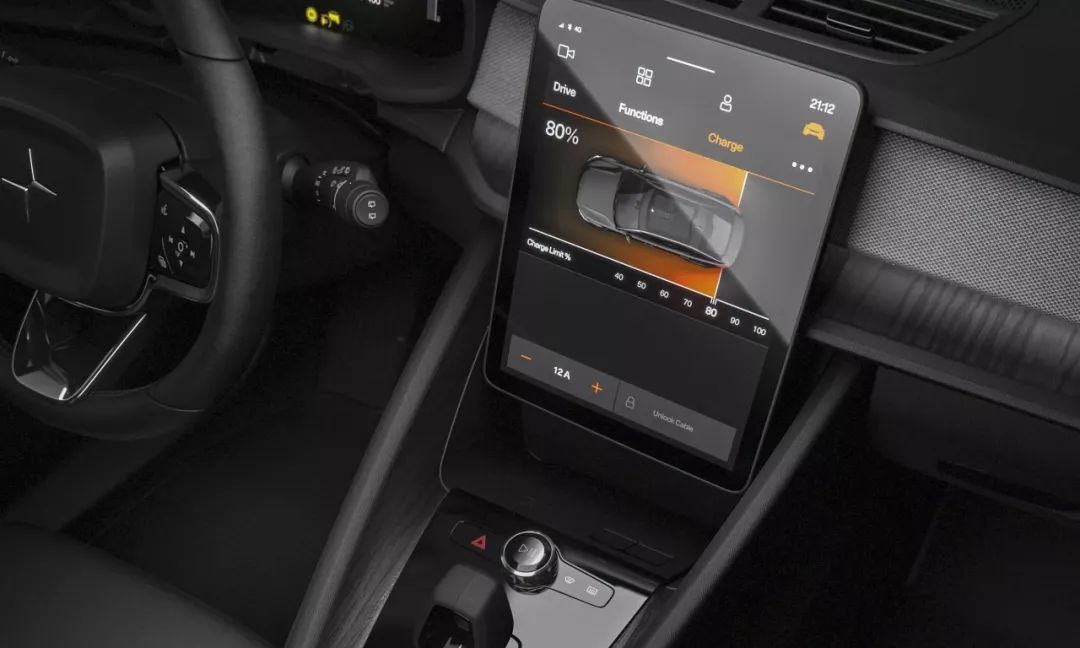
In my opinion, “the first batch of cars equipped with a standardized Android system” is actually able to receive more technical support from Android engineers, and adjust and optimize product and service experiences for driving scenarios. They can also receive support for system update technology the fastest.
Specifically, the overseas version of Polestar 2 includes Google Assistant, Google Maps, and Google’s app store. If you have experience travelling abroad, you will know that the products made by Google completely surpass traditional car manufacturers in terms of user experience.Translate the Chinese text in Markdown format to English Markdown format, using a professional approach, retaining the HTML tags inside the Markdown and only outputting the result.
In other words, Google has the Android phone brand Pixel, which always receives immediate technical support from the Android software engineering team. However, Google does not have a car brand, and the first batch of car brands, including Polestar, is Google’s Pixel in the automotive field.
Of course, for well-known reasons, the domestic Polestar 2 will be equipped with local technology suppliers such as Gaode Map and iFLYTEK. However, both domestic and foreign native Android technical support is the same in the underlying car system.
Although Tesla’s central control may also have various updates such as Easter eggs and small games, @ElonMusk, please pay more attention to the localization of the most basic voice, map, and multimedia.
In summary, Polestar 2 narrowly wins or slightly loses in almost all dimensions compared to Model 3. Considering Polestar 2’s later delivery time, its competitiveness may be worrying or even disadvantaged.
In my opinion, Polestar 2 is the first relatively qualified competitor to the Model 3. Although Polestar 2 has not demonstrated strong product strength in Tesla’s defined rules of the game, Tesla’s rules of the game are not everything in the eyes of the general public.
Why Polestar 2?
In the North American market where market demand is first satisfied, Model 3 has already dominated all competitors, surpassing all competitors including BBA. Why did Polestar come out to fight first? Don’t forget that Volvo also has the most aggressive timetable to stop selling fuel vehicles among traditional car companies. Its weak foundation in the traditional internal combustion engine + gearbox field relative to BBA makes it easier for it to transform and thus presents a greater opportunity in the intelligent electric vehicle market.
Will the competition pattern of the luxury car market be rewritten? This is really interesting.

 * Why is Volvo creating a separate brand for electric cars?
* Why is Volvo creating a separate brand for electric cars?

This article is a translation by ChatGPT of a Chinese report from 42HOW. If you have any questions about it, please email bd@42how.com.
